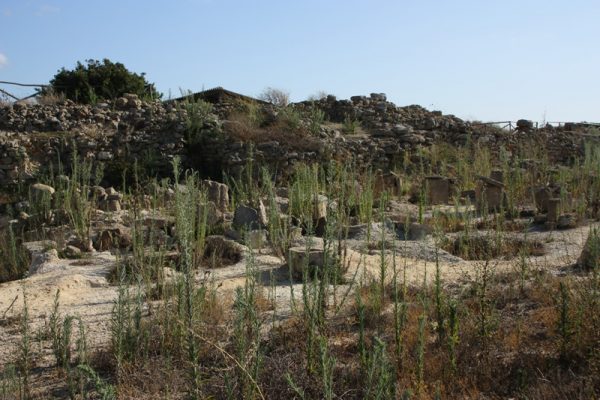Necropolis (Mozia)
Area belonging to the archaeological site of Mozia
La necropolis of the archaic phase is found on the northern coast of the island. It is a vast open rocky area, crossed by the walls, which leaves some tombs inside the city. The tombs are mainly ad cremation and consist of small pits dug into the rock or earth that contain the cinerary (container where the burnt remains of the deceased were placed) and on the sides the objects of the funerary equipment. The cineraries were of three types:
- cinerary formed by six raw tuffaceous slabs - four lateral, one at the bottom as a bottom and the other at the top as a lid;
- cinerary made up of various types of amphorae;
- cinerary consisting of a monolithic block of stone, square or rectangular, in which a square dimple was obtained in the center intended to contain the burnt remains of the deceased; for the lid it had either a slab or another identical monolithic block.
The funerary equipment, generally quite modest and undifferentiated, is made up of Phoenician-Punic ceramics, accompanied by examples of Greek ceramics.Corinthian imported, which allow us to date most of the burials between the end ofVIII and VII century BC, while the tombs of VI e XNUMXth century. Some tombs also contained iron weapons (daggers and swords) or ornaments in gold, silver and bronze (pendants, bracelets, earrings, rings, etc.). A richer tomb featured fifteen ceramic vessels, including six vases Corinthians imported, and a Phoenician terracotta statuette, depicting a female figure squeezing her breast, as a symbol of fertility and fecundity. A set of sixteen tombs was bordered by a wall made of rough stones between the city wall and the industrial area. These tombs presented extraordinarily homogeneous objects consisting of archaic Phoenician-Punic ceramics, and perhaps belong to the first group of settlers. At the beginning of 6th century BC the area was crossed by the construction of the city walls and the necropolis was moved to the mainland, on the promontory of Birgi.
Source: wikipedia, web
Photo: Di Codas2 - Own work, CC BY-SA 3.0, https://commons.wikimedia.org/w/index.php?curid=7541029
Card insertion: Ignazio Caloggero
Information contributions: Web, Region of Sicily
Note: The populating of the files of the Heritage database proceeds in incremental phases: cataloging, georeferencing, insertion of information and images. The cultural property in question has been cataloged, georeferenced and the first information entered. In order to enrich the information content, further contributions are welcome, if you wish you can contribute through our area "Your Contributions"



